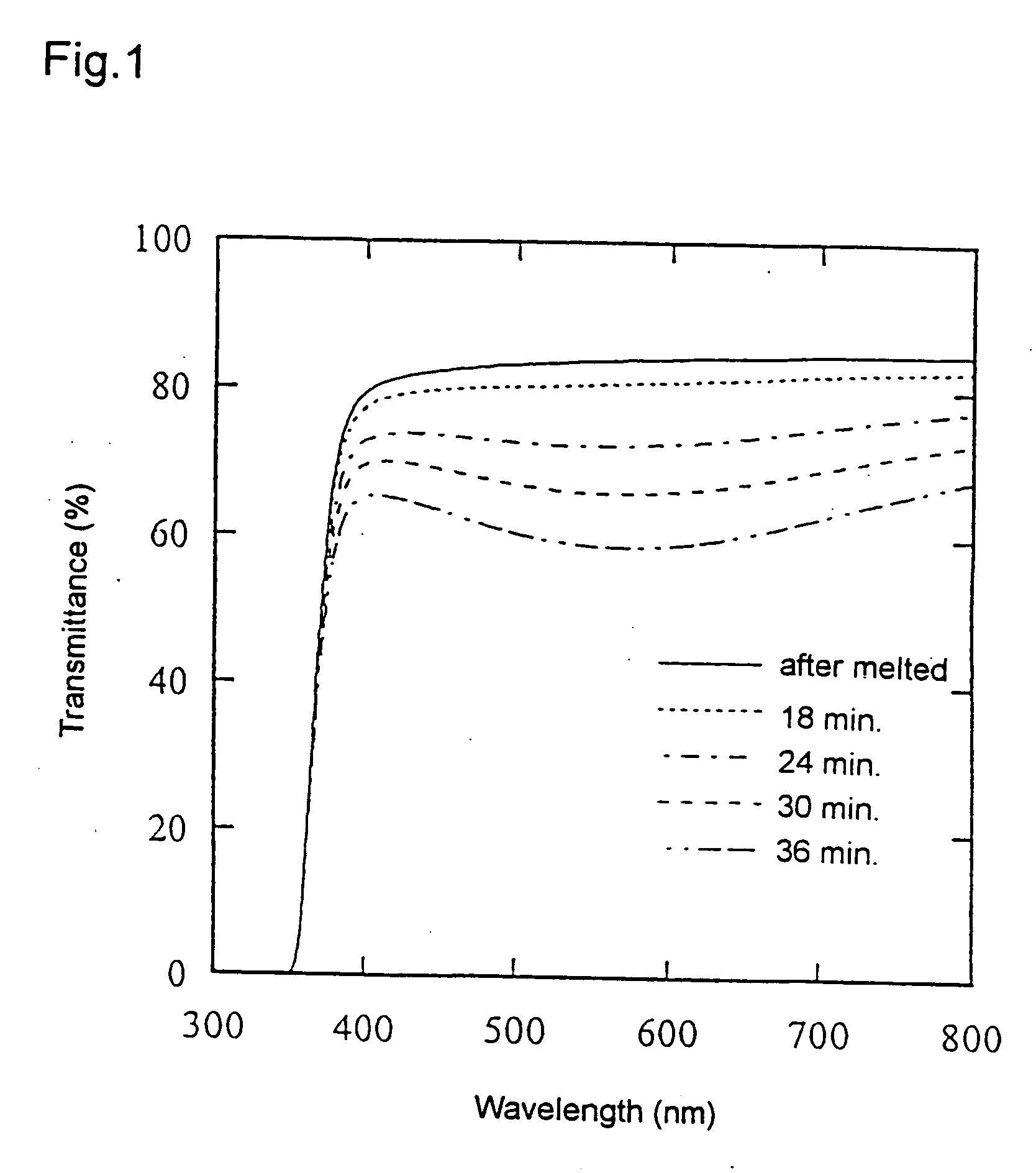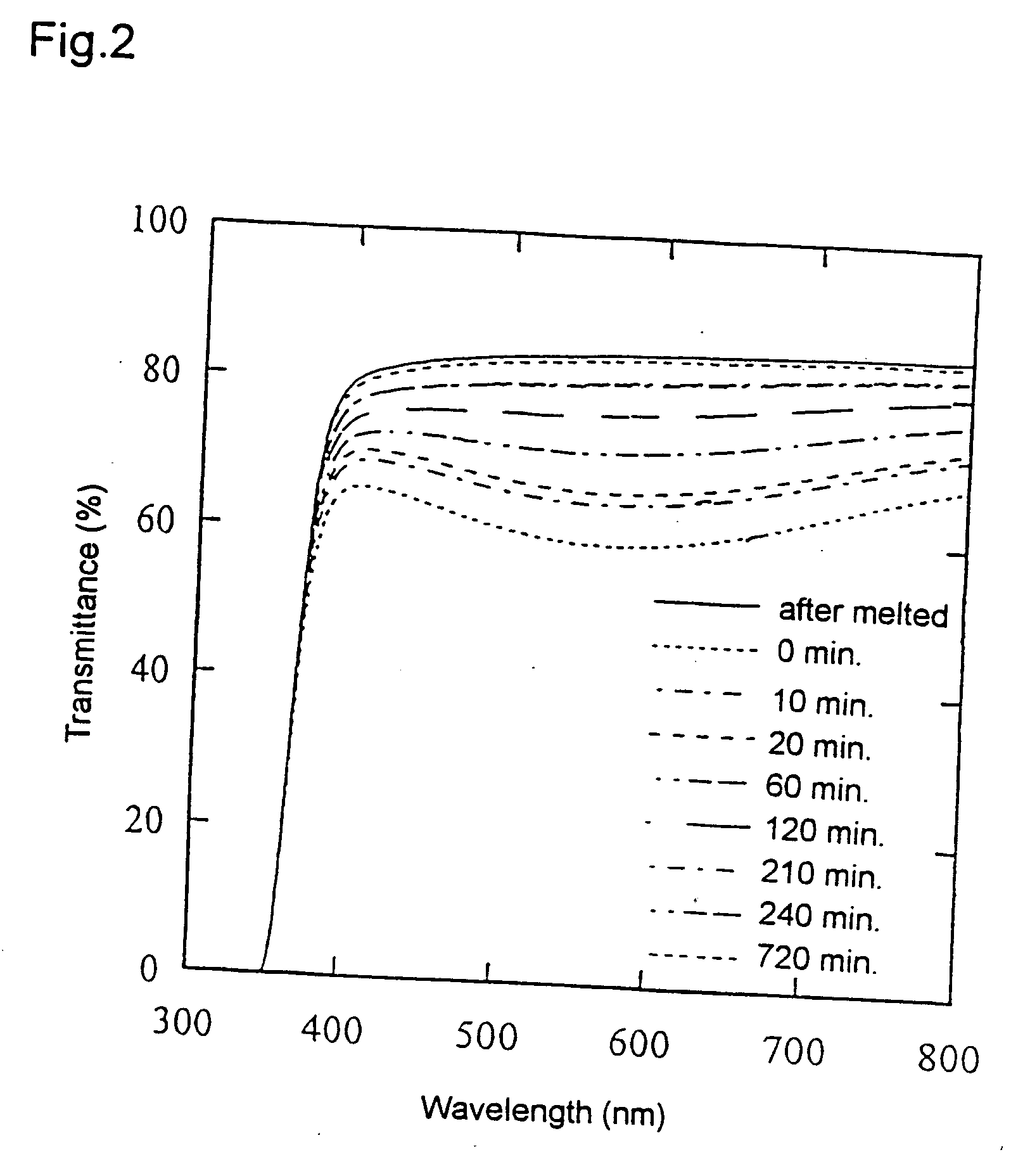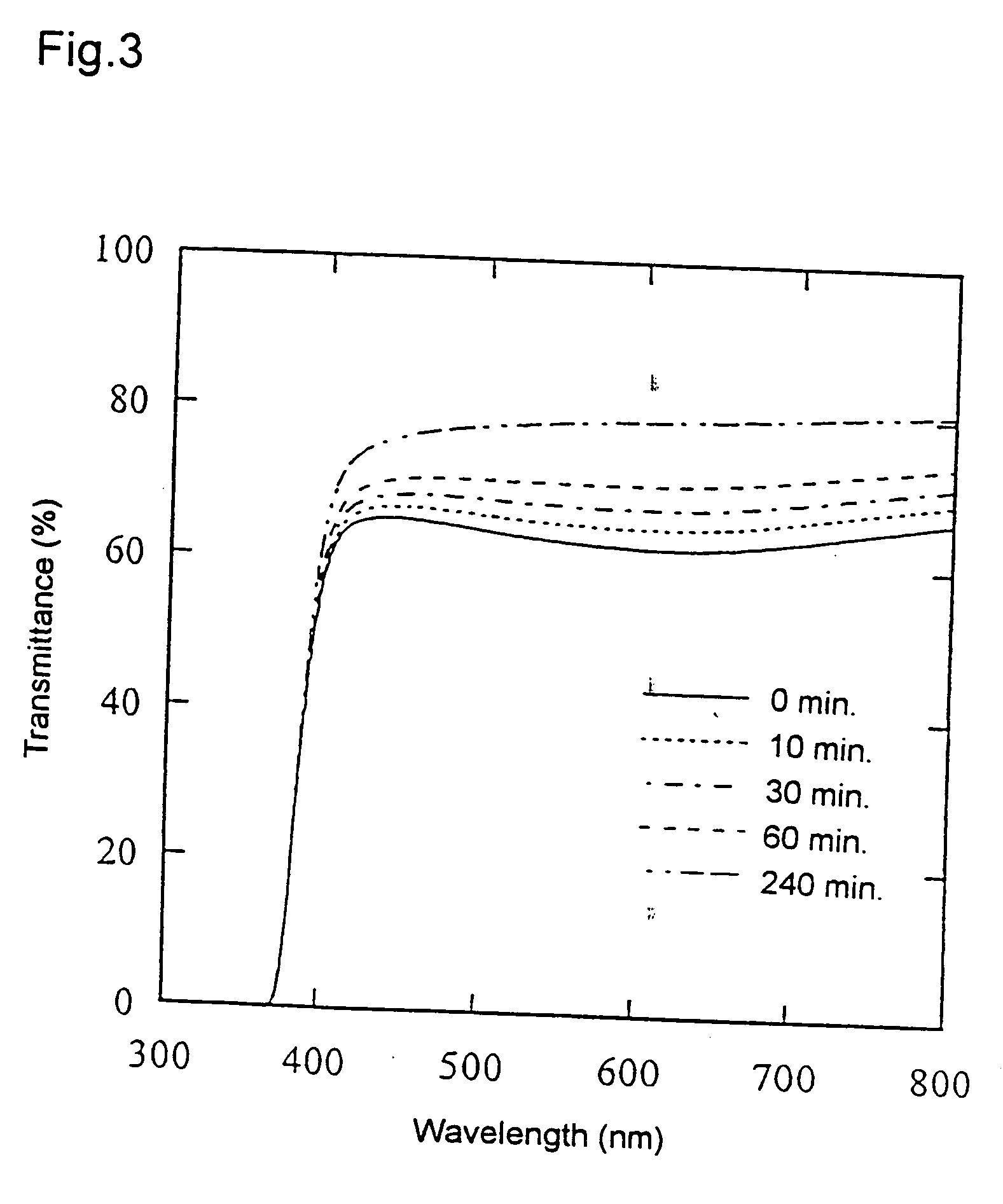Process for the production of glass molded article, optical element produced by the process, and method of treating glass
- Summary
- Abstract
- Description
- Claims
- Application Information
AI Technical Summary
Benefits of technology
Problems solved by technology
Method used
Image
Examples
example 1
A glass having a composition 1 shown in Table 1 (22.8 mol % of P2O5, 15.2 mol % of WO3, 15.9 mol % of Nb2O5, 10.1 mol % of Li2O, 9.7 mol % of Na2O, 2.5 mol % of K2O, 16.2 mol % of BaO and 7.6 mol % of B2O3) was prepared by melting at 1,100° C. After gradually cooled, the glass had a yellowish color. The glass had properties as shown in Table 1. The glass was formed into a sheet having a thickness of 2 mm by cold working, and the glass having a sheet form was heat-treated in a nitrogen gas atmosphere at 560° C. As the time period of the heat treatment increased, circumferential areas of the glass began to turn blackish purple and the entire glass was colored in several tens minutes. FIG. 1 shows a change of a transmittance spectrum with the passage of the heat treatment time. As shown in FIG. 1, the minimum transmittance was controlled to be 62% by controlling the heat treatment time period.
Glasses having compositions 2 to 28 shown in Tables 1 to 6 were successfully colored by hea...
example 2
The colored glass obtained by heat treatment in a nitrogen gas atmosphere for 36 minutes in Example 1 was heat-treated under atmosphere of air at 480° C. FIG. 2 shows a change of a transmittance spectrum in the heat treatment under atmosphere of air. With an increase in the time period of the heat treatment, the glass colored in blackish purple came to be lighter in color. After 4 hours, the glass came to be nearly colorless.
The glasses having compositions 2 to 28, which were treated for coloring in Example 1, were similarly heat-treated under atmosphere of air, whereby the color degrees of the glasses were decreased and the glasses were decolored and rendered transparent. After the heat treatment, further, no change was found in the glass compositions. When the atmosphere for the heat treatment is altered as described above, the reversible coloring and decoloring can be performed.
example 3
A glass having a composition containing, by mol %, 23.9% of P2O5, 19.8% of WO3, 14.8% of Nb2O5, 4.9% of TiO2, 15.2% of Li2O, 5.8% of Na2O, 2.5% of K2O, 11.1% of BaO and 2.5% of B2O3 was prepared by melting at 1,100° C. The obtained glass had a blackish blue color. The glass was formed into a sheet having a thickness of 2 mm by cold working, and the glass having a sheet form was heat-treated under atmosphere of air at 515° C. As the time period of the heat treatment increased, the blackish blue color of the glass came to be lighter. FIG. 3 shows a change of a transmittance spectrum in the heat treatment under atmosphere of air. As shown in FIG. 3, the minimum transmittance was controlled to be in the range of from 64% to 80% by carrying out the heat treatment for a period of time up to 6 hours.
There was found no change that was caused on the glass composition by the above heat treatment.
PUM
| Property | Measurement | Unit |
|---|---|---|
| Fraction | aaaaa | aaaaa |
| Fraction | aaaaa | aaaaa |
| Fraction | aaaaa | aaaaa |
Abstract
Description
Claims
Application Information
 Login to View More
Login to View More - R&D
- Intellectual Property
- Life Sciences
- Materials
- Tech Scout
- Unparalleled Data Quality
- Higher Quality Content
- 60% Fewer Hallucinations
Browse by: Latest US Patents, China's latest patents, Technical Efficacy Thesaurus, Application Domain, Technology Topic, Popular Technical Reports.
© 2025 PatSnap. All rights reserved.Legal|Privacy policy|Modern Slavery Act Transparency Statement|Sitemap|About US| Contact US: help@patsnap.com



